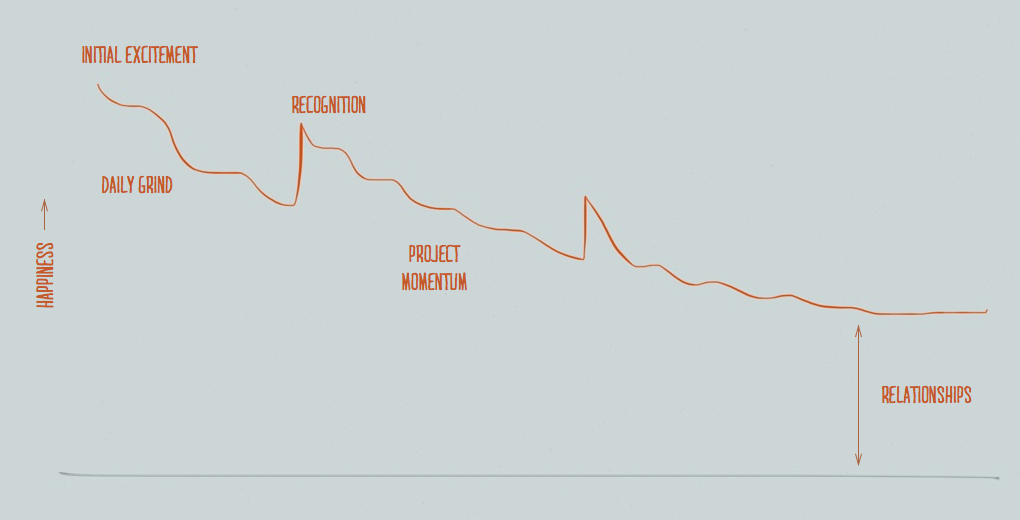 Pink describes a wonderful theory on what motivates us in Drive
Pink describes a wonderful theory on what motivates us in Drive . According to him, people are motivated by having autonomy, mastery, and purpose. And at a macro level, the driving factors he lists reflect my own personal experience pretty accurately.
. According to him, people are motivated by having autonomy, mastery, and purpose. And at a macro level, the driving factors he lists reflect my own personal experience pretty accurately.
And yet, even during the times when I have all three, my levels of happiness oscillate wildly over time. I might be initially pulled in by the vision of what we are trying to build, but this excitement in annealed through the arduousness of the daily grind and reinforced by the skills I develop.
All together, my rough back of the envelope equation on my motivation level as a function of time is captured by:
where
- , is the initial excitement for what we are building. The motivating power of the vision decays over time, captured by the constant k.
- is the friction of the daily grind. The harder it is to get the simple things done, the higher the coefficient. Meeting overheads, process inefficiencies, ineffective approval process, broken tools all fall in this bucket.
- is the momentum of the project, and like any project, momentum is somewhat cyclic. Ideally, this would be an exponentially increasing curve.
- is a step function for responsibility, I feel more motivated when I know that more depends on me.
- , salary raises, promotions, and shoutouts are impulse functions. They have a strong short term effect but their effect regresses quickly.
- , skill growth increases over time.
- , and lastly, the relationships you build, the growth in skills you experience, and quite honestly, the strong disincentive against leaving the familiar, are all constants that round up how motivated I feel.
What am I missing that impacts your motivation when working on something?
